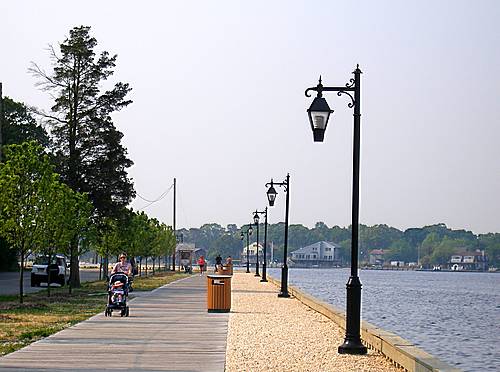Example of Obstacles to Adaptation
Toms River, New Jersey
A look at Toms River, a coastal town in New Jersey, as told in the book “The Water Will Come” by Jeff Goodall, provides us with some more insight into some of the obstacles to sea level rise planning in the U.S.
Toms River, NJ is an example of a community that is reluctant to embrace change even with ample evidence that business as usual could lead to catastrophic losses in the future. Data are readily available for how rising sea levels affect property in coastal communities along the Atlantic coast. The data show that sea level rise will negatively affect the real estate industry, with repeated flooding and consequently reducing home values. The economic impact on tourism will be devastating. Hurricane Sandy damaged or destroyed 10,000 homes, and nearby Ortley Beach fared worse. A lot of work went into planning efforts to redesign these communities to adapt to the changing climate and higher sea levels of the future, including relocating some properties. However, despite these efforts, community leaders rejected the plans, and the town rebuilt the damaged property in the same location, elevating homes to a new level and reinforcing the dunes as protection. Toms River is not alone. Communities along the Atlantic and Gulf coasts resist change and choose to rebuild in place rather than take a long-term approach and begin to address the problems that will only get worse. The reasons are many, but to effect change, there must be political will and a desire for change in the community, which are presently lacking in many places. Although doubtless, some residents of Toms River and other communities impacted by the combination of sea level rise and storm surge do decide that they cannot risk another flood and move to a safer location, typically, people make decisions based on their personal financial situation and emotion. The example of Isle de Jean Charles in Louisiana that we covered in Module 9 exemplifies how challenging it is to implement the relocation of a community when people are attached to their homes and communities and depend on the place for their livelihoods. So, what will it take to overcome the challenges and implement successful plans for adaptation? Currently, with each successive catastrophic storm, people react and some leave while others dig in and use the resources available to rebuild.

In Module 12 you read about the National Flood Insurance Program (NFIP) and its financial insolvency. Many point to the reliance of homeowners on subsidized flood insurance to bail them out after each successive flood as one of the key incentives for rebuilding in place and for the complacent attitude towards sea level rise warnings.
It is clear that, if coastal communities are to implement sea level rise adaptation strategies, large policy changes are needed, and to effect these changes, shifts in political views and the fundamental ways people think about their relationship with their coastal communities will be necessary in many places.
